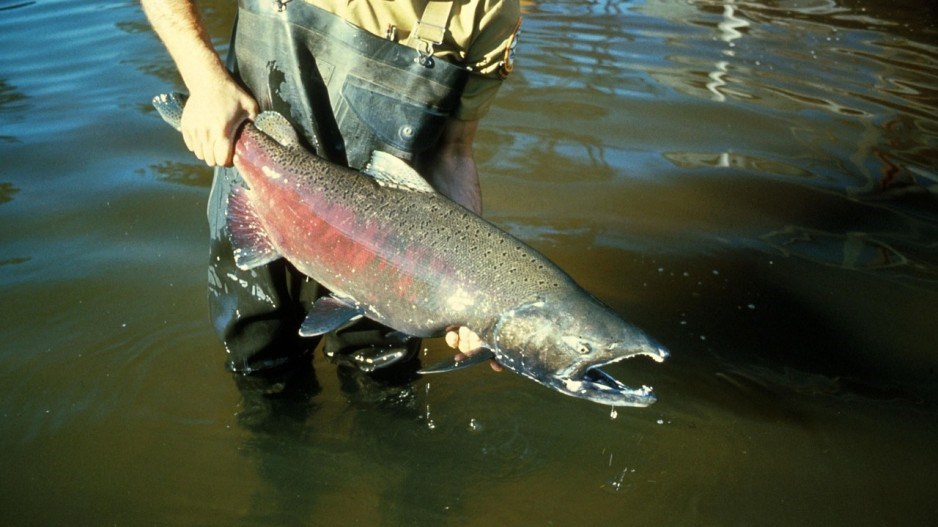Large cool trend in the PDO, which is helpful for salmon. The El Nino we had going on may be shifting to La Nina - heard there was early data NOAA shared recently that things are potentially shifting in Southern Hemisphere - bit early to tell if that will play out, but could be good news combined with PDO trend if that also continues. Haven't seen GOA data on Ocean conditions
Figure PDO-01. Time series of the Pacific Decadal Oscillation (PDO) from 1950 to present. Values are summed over May through September. Red bars indicate positive (warm) years; blue bars indicate negative (cool) years. Credit: NOAA Fisheries
Warm or cool phases can persist for decades. For example, a predominately cool phase occurred from 1947 to 1976 (blue bars in Figure PDO-01), and a 21-year warm phase occurred from 1977 to 1998 (red bars).
These decadal cycles broke down in late 1998 when the PDO entered a cold phase that lasted only five years. This cold phase was followed by a warm phase from 2003 to 2007 and an abrupt change to a cold phase from 2008 to 2013 (with a short interruption during the moderate El Niño in fall/winter 2009-2010). The PDO then switched phases again in 2014 and remained positive until 2018. This period coincided with a large marine heatwave and El Niño that negatively impacted the marine ecosystem in the NE Pacific during that time. Since 2020, the PDO has been consistently negative,
reaching the most negative values since 1955 in both 2022 and 2023.
Pacific Decadal Oscillation and Ocean Niño Index
The PDO turned negative (cool phase) in January 2020, and has remained strongly negative through 2023, ranking 2023 first as the most negative PDO in the 26-year time series. Despite this,
the Ocean Niño Index (ONI), which is the three-month running mean of equatorial sea surface temperature (SST) anomalies, shifted from negative (cool) to positive (warm) in April. These equatorial SST anomalies have remained above the +0.5 °C threshold for five consecutive months, signaling El Niño conditions. The NOAA
Climate Prediction Center predicts El Niño conditions will continue through at least spring 2024.
While these two basin scale indices are not always in phase, the strong separation of these two indices is the first occurrence in the past 26 years. Because the PDO is an index of the spatial SST pattern in the north Pacific, the strongly negative PDO values over the past few years likely reflect the increased SST gradient across the north Pacific, from warmer sea surface temperatures in the western Pacific compared to the eastern Pacific. As a result, this basin-scale index no longer reflects regional sea surface temperatures (which have been warmer than average since July) as well as in previous years.
Time series of shifts in sign of the Pacific Decadal Oscillation (PDO; bars) and the Ocean Niño Index (ONI; line) from 1996 to present. Red bars indicate positive (warm) years; blue bars negative (cool) years. Credit: NOAA Fisheries
This data (below) is for WA to CA ocean conditions, not WCVI or GOA.
Since 1996, the Northwest Fisheries Science Center has monitored the ocean environment off the Washington and Oregon coasts, its interaction with the California Current, and how ocean conditions affect fisheries, focusing on juvenile salmonids.
Our ocean indices combine a suite of oceanographic data to capture the changing ecosystem. These indicators characterize ocean conditions experienced by juvenile salmon entering the northern California Current. We rate each indicator in terms of whether the relative impact on the marine survival of juvenile salmon is "good," "poor," or "fair”.

 www.westerninvestor.com
www.westerninvestor.com